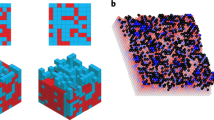Abstract
A treatment of corrosion of galvanic couples in which the area of one metal greatly exceeds that of the other has been carried out using mixed potential theory. A ruptured metallic coating on a metal substrate is encompassed by the treatment, as is a metal containing inclusions of a second metal as impurity. Two cases are examined. In the first, exemplified by zinc-plated steel, three reactions are considered: dissolution of the coating and reduction of the oxidizing agent on each metal. In this case, the result of the rupture is often a very marked increase in the corrosion of the coating, leading to an autocatalytic effect. The second case treats an active metal protected by a coating of a more noble metal. The following reactions are considered: both directions of the redox couple generated by the oxidizing agent, and the dissolution of the substrate. It is demonstrated that in the second case the corrosion rate is maximal at vanishingly small porosities. In both cases, variations of the corrosion potential can be used as a measure of porosity.
Similar content being viewed by others
Abbreviations
- Me1 :
-
Coating
- Me2 :
-
Substrate
- Ox:
-
Oxidizing agent (H+, H2O or O2)
- Rd:
-
Reduced form of Ox (H2 or OH−)
- I :
-
Current
- i :
-
Current density (c.d.)
- A 1 :
-
Area of coating
- A 2 :
-
Area of substrate
- A=A 1+A 2 :
-
Total area
- A 2/A 1 :
-
Porosity
- β :
-
Tafel slope
- a :
-
Anodic Tafel constant related toβ
- c :
-
Cathodic Tafel constant related toβ
- φk :
-
Corrosion potential
- I k :
-
Corrosion current
- i oj :
-
Exchange c.d. of reaction (j)
- φ j :
-
Reversible potential of reaction (j)
- i ko :
-
Corrosion c.d. corresponding to unruptured coating
- i km :
-
Corrosion c.d. at maximumi k
- i L02 :
-
Limiting oxygen diffusion c.d.
References
H. H. Uhlig, ‘Corrosion and Corrosion Control’, Wiley and Sons, New York, London (1963).
C. Wagner and W. Traud,Z. Electrochem.,44 (1938) 391.
H. Kaesche, ‘Die Korrosion der Metalle’, Springer Verlag, Berlin (1966).
Ibid., Ch. 8.
M. Stern,Corrosion,14 (1958) 329t.
R. J. Morrissey,J. Electrochem. Soc.,117 (1970) 742.
F. Mansfeld and E. P. Parry, unpublished results.
K. J. Vetter, ‘Electrochemical Kinetics’, p. 741, Academic Press, New York, London (1967).
A. de la Rive,Ann. Chim. Phys.,43 (1830) 425.
T. Ericson-Auren and W. Palmaer,Z. physik Chem. 39 (1901) 1;45 (1903) 182;56 (1906) 689.
F. Mansfeid,Corrosion 27 (1971) 436.
Author information
Authors and Affiliations
Rights and permissions
About this article
Cite this article
Oldham, K.B., Mansfeld, F. Galvanic corrosion resulting from rupture of a protective metallic coating. J Appl Electrochem 2, 183–191 (1972). https://doi.org/10.1007/BF02354975
Received:
Issue Date:
DOI: https://doi.org/10.1007/BF02354975




